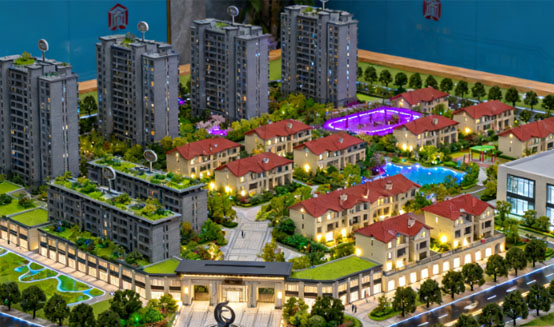In the real estate industry, expos are a core offline customer acquisition scenario. The ability to efficiently identify and target customers is crucial to a project’s success. This guide provides a comprehensive methodology for accurately positioning target customers at real estate expos, helping practitioners maximize expo benefits.
I. Preliminary Strategic Planning: Precise Positioning and Data-Driven Approach
Target customer profile construction requires a three-dimensional model based on project characteristics. Market research data should clarify basic dimensions such as customer age groups, income ranges, and home-buying motivations. This should be supplemented with personalized tags such as regional preferences, unit type requirements, and amenities highlighted in conjunction with project positioning. A “T+3” data model is recommended: dynamically updating customer profile data based on the three months prior to the project’s launch to ensure timely information.
Booth design should follow the “magnetic field effect” principle. The main visual system should highlight the project’s core selling points, such as “school district property” or “river view property” labels. The visitor flow should adopt a “fishbone” layout, setting up three levels of space: reception area, display area, and negotiation area, guiding visitors through a natural flow. Electronic screens should embed an interactive query system, allowing visitors to independently search for basic information such as floor plans and price ranges, freeing up manpower to focus on in-depth communication.
II. On-site Implementation Strategies Customer identification requires a three-tiered screening mechanism. Initial screening assesses intent by observing visitor dwell time and their willingness to request information; intermediate screening gathers basic information through questionnaires and QR code scanning; and in-depth screening uncovers latent needs through one-on-one communication. A “three-question rule” is recommended: first, confirm the purchase budget; second, clarify regional preferences; and third, pinpoint unit type requirements to quickly identify the core customer group.
Interactive design should emphasize an “immersive experience.” VR viewing systems should cover main unit types, highlighting realistic experiences such as lighting and circulation; model explanations should incorporate regional planning maps, emphasizing advantages in transportation, commerce, and education; children’s play areas can extend the stay of families, creating more opportunities for communication. Electronic check-in systems should simultaneously record visitor behavior, providing data support for subsequent analysis.
III. Data Operation System: Closed-Loop Management from Exhibition to Conversion
Information collection requires a “dual-channel” system. Online, structured data is obtained through QR code lead generation and questionnaire links; offline, non-standardized information is collected through business card exchange and paper questionnaires. It is recommended to use a CRM system for customer segmentation management, classifying customers into A, B, and C categories based on their level of interest, and matching different follow-up strategies to each category.
Follow-up follow-up must adhere to the “golden 72 hours” principle. Send a thank-you text message within 24 hours after the exhibition, complete a follow-up phone call within 48 hours, and send project updates within 72 hours. For high-intent customers, invite them to exclusive appreciation events or one-on-one apartment layout presentations to drive the decision-making process. Simultaneously, a customer feedback mechanism should be established, continuously optimizing service processes through satisfaction surveys.
IV. Risk Management: Avoiding Common Pitfalls and Improving Conversion
Beware of the “casting a wide net” customer acquisition trap. Blindly collecting a large number of low-quality leads will consume manpower costs; instead, focus should be placed on in-depth mining of precise customer groups. Booth staff training should emphasize “demand-oriented” communication skills, avoiding rote memorization of sales scripts and instead adopting a “listen-question-respond” dialogue model to truly address customer pain points.
Digital tool applications must prioritize data security. Customer information storage should comply with privacy regulations such as GDPR, employing encryption technology to ensure data security. Electronic devices should be supported by professional IT personnel to prevent system malfunctions during the exhibition from impacting customer experience.
Conclusion: The value of real estate expos lies not only in short-term customer acquisition but also in building a long-term customer operation system. From initial strategic planning to on-site execution details and subsequent data operations, every step requires a customer-centric, systematic design. Mastering these core strategies will enable you to accurately identify target customers at the expo, achieving an efficient closed loop from expo to conversion, ultimately gaining a competitive edge in the fierce market.







